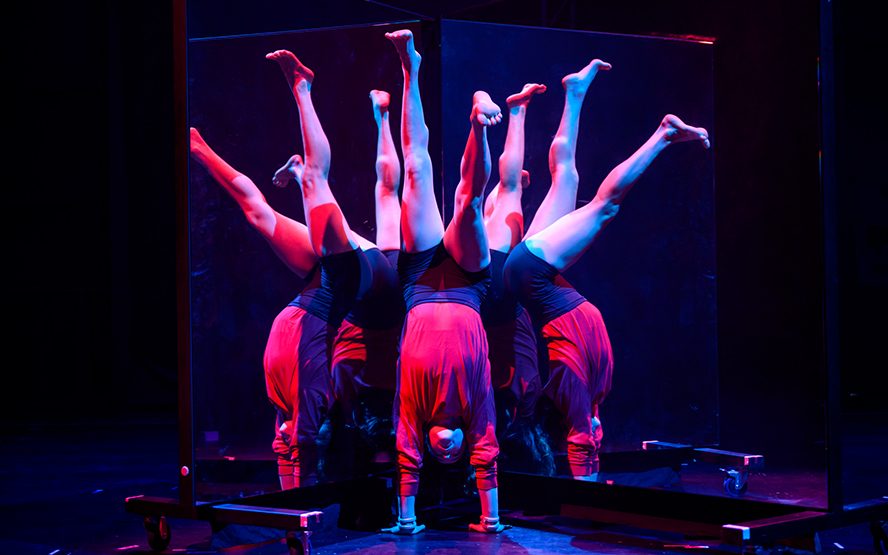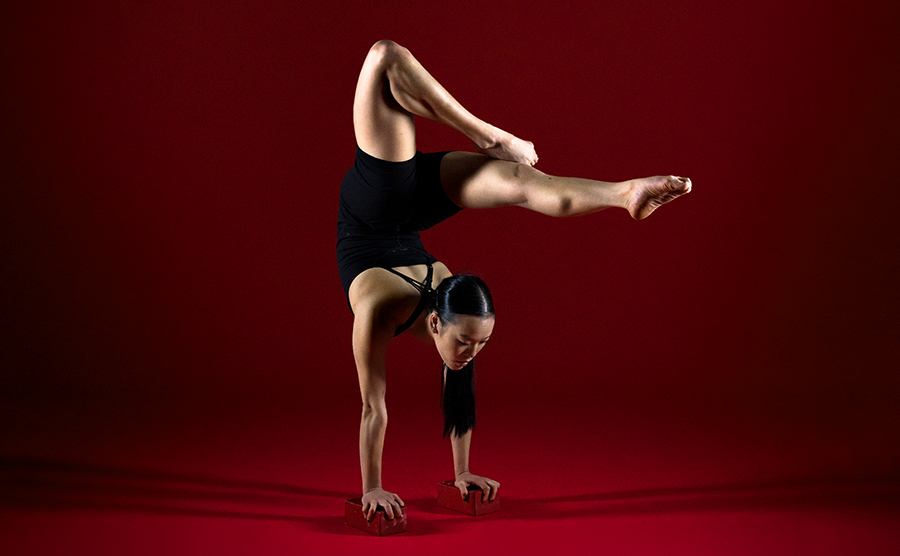Want to know what a tangible pathway to circus industry success looks like? At the National Institute of Circus Arts (NICA), this starts with building professional networks from day one, coupled with plenty of live performance opportunities.
Students are also encouraged to innovate with new technologies, explained James Brown, NICA’s Head of Circus Studies.
‘NICA is really committed to creating industry-ready artists. We’re making sure that students gather the knowledge that they’re going to need in the industry to have long-term careers,’ he said.
Training at NICA is future focused, Brown continued. ‘What we’re seeing in the industry is this really exciting cross-section of circus, physical theatre and technology. At NICA we really put a focus on where that meets … We have assessment tasks that get students thinking about incorporating technology into their act and also working together with the film, media and video capture department at Swinburne University on real-life applications for circus education and performance.’
Such technologies include virtual 3D models where students can see the ideal form for the skill they’re trying to achieve – such as hand-balancing acts that are difficult to examine for long periods in real life – as well as live-streaming student performances for audiences across the world.

Students will also have plenty of opportunities to hone their performance skills and confidence, said Brown.
‘From the very start of the three-year Bachelor course, students are able to come together and present live performances. For each year level they can incorporate new performance, movement and circus skills.
‘This all culminates in the third year where students are introduced to an international director and collaboratively they create a work drawing on the students’ skills and the director’s interests for a really unique performance at the international level.’
Training career-ready circus artists
NICA students also receive training in other aspects of circus arts to ensure that they’re career-ready upon graduation.
‘[Their] physical training is coupled with business units to really make sure that our students understand the market, both nationally and internationally, and their value in the industry,’ Brown said.
Nationally, NICA has long-standing relationships with Adelaide Fringe, Melbourne Fringe and circus festivals across Australia. Before COVID, NICA students also embarked on international study tours including to Montreal, Canada.
Brown revealed some exciting developments: ‘Next year we will be introducing a work-integrated learning unit which allows students to participate in internships for course credit. That could be the whole cohort going to Adelaide, for instance or students proposing their own opportunities.’
He also highlighted the diverse training practices students are exposed to during their time at NICA.
‘One of the most amazing things about NICA is that we have such a multicultural teaching cohort – some of the best trainers from China, France, Canada and Russia. They bring a unique training and personal perspective on how to achieve a skill and new pieces of apparatus that Australia may not have been exposed to yet.’
Who are NICA looking for?
As a final word of advice for those considering applying, Brown said: ‘NICA is a circus school; we are not an acrobatic school – so really we’re looking for a wide and diverse range of students from different backgrounds.
‘We really encourage people that are coming from gymnastics, dance, martial arts, parkour, swimming and so on, any sort of elite sport. Circus is such an amazing industry and it gives you an opportunity to use all those skills that you’ve developed through other sports and art forms, and really allows them to come together and make a career out of it.
‘It’s amazing to be paid touring the world doing what you love,’ Brown concluded.
Applications to study with NICA in 2023 are open. Learn more and apply.





